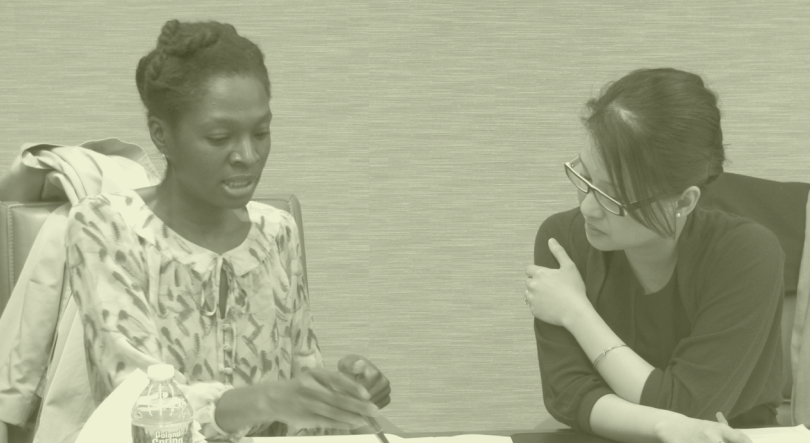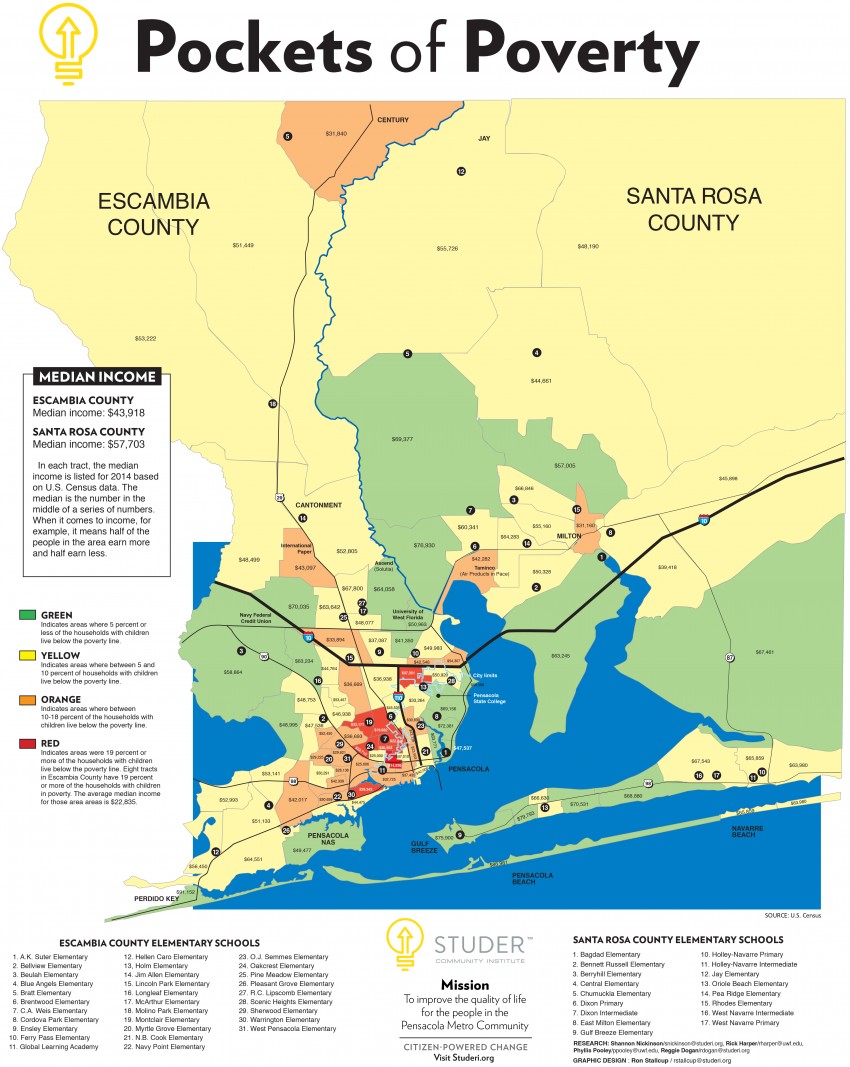How one community uses coaching to overcome poverty
- December 14, 2015
- / Shannon Nickinson
- / community-dashboard

This image is from the cover of the report by Crittenton Women's Union in Boston, Mass., on an effort to use one-on-one coaching to help women overcome poverty.
Now that we've mapped the Pockets of Poverty in the Pensacola Metro area, what's next?
In a recent report, the Studer Community Institute, in partnership with the University of West Florida,
used U.S. Census data to map poverty among families with children in the Escambia and Santa Rosa County area.
The data found that in eight Census tracts in Escambia County, at least 1 out of every 4 children live in poverty.
In 30 of the 71 Census tracts in Escambia, at least 1 of every 10 children live in poverty — and there are 8,200 children under age 5 living in those areas.
In Santa Rosa County, only two Census tracts have a poverty rate among families with children of 10 percent or higher.
The Aspen Institute highlights a program called the Crittenton Women's Union, which uses one-on-one coaching to help women navigate a path out of poverty for themselves and their families.
In a recent post, it uses the story of a woman in the program, Tina, who over time and with the help of her coach, has improved her finances, gotten a better education and has become by her own admission a better parent.
The story, written by Nicki Ruiz de Luzuriaga highlights the impact that poverty has on a person's sense of self-worth and control over her own choices. Read a full report on the program here.
It correlates to research highlighted in August 2013 in the journal Science documenting how being poor itself impacts a person's ability to make good decisions and school, money and life. That study was based on research done at Harvard, Princeton and the University of Warwick. Read more about that study here.
Luzuriaga's story for the Aspen Institute site focuses on one path that has been successful in helping women improve their lives. She also notes:
It is important to note that coaching does not work on its own. Coaching can’t create opportunity for people in poverty; it can only help those people make best use of the opportunities that exist. Tina was able to succeed in part because of coaching, but also because she was able to access a community college education and financial aid, and because there were good-paying jobs available when she completed her training.
Higher wages and more stable work hours, better policies to support families (including paid leave and subsidized childcare), and affordable and safe housing opportunities are all key structural supports necessary to help low-income families move ahead.
While those who provide services for low-income families should consider incorporating intentional coaching relationships into their programs, they should also remain committed to meaningful structural change that will move all families ahead.
Or let's look at it another way.
It is true that the Good Book quotes Jesus as saying "The poor you will always have among you, but you will not always have me."
It is true that there were gaps in my catechism study, I don't think that means we should shrug our shoulders and not try to do better by our fellow men and women. Especially as long as those poor people and their children aren't in our ZIP code.
I'm pretty sure that's not what Jesus would do.
As this community begins to take its own fearless moral inventory — to look at what the data tell us about our community and its prospects for growth — we also need to look to strategies that other communities have used to address this issue.
Because we know the way the story ends if we do nothing. It ends with Pensacola still counted as the poorest metropolitan area in the state of Florida.
With a high school graduation rate that ranks 57th out of 67 counties in the state, and where only about half of our African-American high school students graduate.
With one-third of our 5-year-olds unprepared for kindergarten — which earns us a ranking of 51st of 67 counties in Florida.
With a crime rate that trends up as overall the state crime rate trends down. With data that as of 2013 that shows a county with the 10th highest rate of reported child abuse in the state. With opportunities lost, with potential untapped, with a community that only progresses so far.
Especially if we've already got ours and the view from our own veranda is nice.
But remember: Let them eat cake didn't work out so well for Marie Antionette.

 CivicCon launches with a look at good growth in cities
CivicCon launches with a look at good growth in cities
 Building stronger brains one baby, one parent at a time
Building stronger brains one baby, one parent at a time
 SCI debuts commercial on Early Learning City
SCI debuts commercial on Early Learning City
 Entrecon: World class speakers and an opportunity to sharpen skills
Entrecon: World class speakers and an opportunity to sharpen skills
 PYP Quality of Life survey 2017
PYP Quality of Life survey 2017
 EntreCon Pensacola 2016: A look back
EntreCon Pensacola 2016: A look back
 Leadership tip: getting better employee takeaways
Leadership tip: getting better employee takeaways
 Leadership tip: be interested instead of interesting
Leadership tip: be interested instead of interesting
 Leadership tip: delivering difficult messages
Leadership tip: delivering difficult messages
 Brain Bags boost Arc, Early Childhood Court programs
Brain Bags boost Arc, Early Childhood Court programs